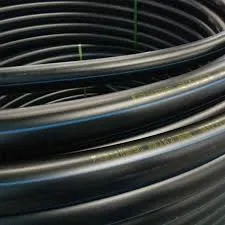Sep . 29, 2024 20:50 Back to list
Guidelines for Selecting and Installing HDPE Pipe Fittings in Various Applications
Understanding HDPE Pipe Fittings Essential Components in Modern Plumbing
High-Density Polyethylene (HDPE) pipe fittings are increasingly being recognized as vital components in modern plumbing and piping systems. These fittings, made from a durable and flexible plastic, serve as connectors between lengths of HDPE pipe, ensuring that water, gas, and various other substances are transported efficiently and safely. This article explores the characteristics, benefits, applications, and installation of HDPE pipe fittings, shedding light on why they are becoming the preferred choice in numerous industries.
Characteristics of HDPE Pipe Fittings
HDPE pipe fittings are primarily made from high-density polyethylene, a thermoplastic polymer known for its remarkable strength-to-density ratio. This material is resistant to a wide range of chemicals, making it suitable for transporting potentially corrosive fluids. Moreover, HDPE fittings are lightweight, which simplifies handling and installation. Unlike traditional metal fittings, HDPE is resistant to rust and corrosion, ensuring longevity and reducing maintenance costs over time.
In terms of functionality, HDPE fittings come in various shapes and sizes, including elbows, tees, couplers, and reducers, allowing seamless transitions and connections in piping systems. Their flexibility allows for ease of installation in complex layouts while accommodating shifts in underlying soil conditions.
Benefits of HDPE Pipe Fittings
The use of HDPE pipe fittings comes with numerous benefits. Firstly, their corrosion resistance means that they do not degrade over time, which significantly extends their lifespan compared to traditional metal fittings. Additionally, they are less likely to leak, given their design, which accommodates thermal expansion and contraction without compromising integrity.
Another significant advantage is their ability to operate effectively under high-pressure conditions. HDPE fittings can maintain structural integrity even under fluctuating or increasing pressure, making them ideal for various applications, from municipal water systems to industrial setups.
Furthermore, HDPE is environmentally friendly, as it can be recycled and does not leach harmful substances into the environment. This is a significant consideration for industries looking to minimize their ecological footprint.
hdpe pipe fitting

Applications of HDPE Pipe Fittings
The applications of HDPE pipe fittings are vast and varied. They are commonly used in water supply and irrigation systems, where reliable piping is essential for distributing water efficiently. Moreover, they are critical in sewage systems, where their ability to withstand harsh environments is indispensable.
In industrial contexts, HDPE fittings are widely utilized for transporting chemicals, sludge, and waste products. Their robustness makes them suitable for high-demand environments, ensuring that operational costs remain low due to reduced maintenance requirements.
Additionally, HDPE fittings are increasingly used in natural gas distribution. The ability of HDPE to handle high-pressure applications while maintaining safety and reliability makes it a preferred choice in this sector.
Installation Considerations
Installing HDPE pipe fittings requires specific techniques to ensure a secure and leak-free connection. The most common methods include butt fusion and electrofusion. Butt fusion involves heating the ends of the pipes and fittings until they melt together, forming a strong bond upon cooling. Electrofusion, on the other hand, uses electric currents to join the fittings with the pipes, providing a reliable connection.
It is crucial to follow manufacturer's guidelines and industry standards during installation to maximize the lifespan and efficiency of the piping system. Proper training for personnel involved in installation can also mitigate risks associated with improper handling.
Conclusion
HDPE pipe fittings play a crucial role in modern plumbing and industrial applications. Their unique properties, including corrosion resistance and adaptability under pressure, make them a superior choice over traditional materials. Whether used in water supply, sewage systems, or chemical transportation, they offer reliable solutions that contribute to the efficiency and longevity of piping systems. As the demand for sustainable and durable materials continues to grow, HDPE fittings are set to become even more integral to the infrastructure of tomorrow.
-
High Transparency PVC Clear Sheet Super Transparency PVC Sheets & HDPE Cutting Board Supplier
NewsJul.04,2025
-
High-Quality PVC-M Pipe Supplier Trusted PVC Pipe Company & 75mm PVC Connection Pipe Solutions
NewsJul.04,2025
-
PVC Transparent Sheet Roll - Durable & Flexible PVC Plastic Sheet Roll for Industrial & Home Use
NewsJun.24,2025
-
High-Quality PVC PPR Pipes and Fittings Durable ERA PPR Solutions
NewsJun.10,2025
-
High-Quality Large HDPE Sheets & Large Diameter PVC Pipe Durable Large PVC Pipe Supplier
NewsJun.10,2025
-
High Density Polyethylene Cutting Board - Durable & Food Safe
NewsJun.09,2025

